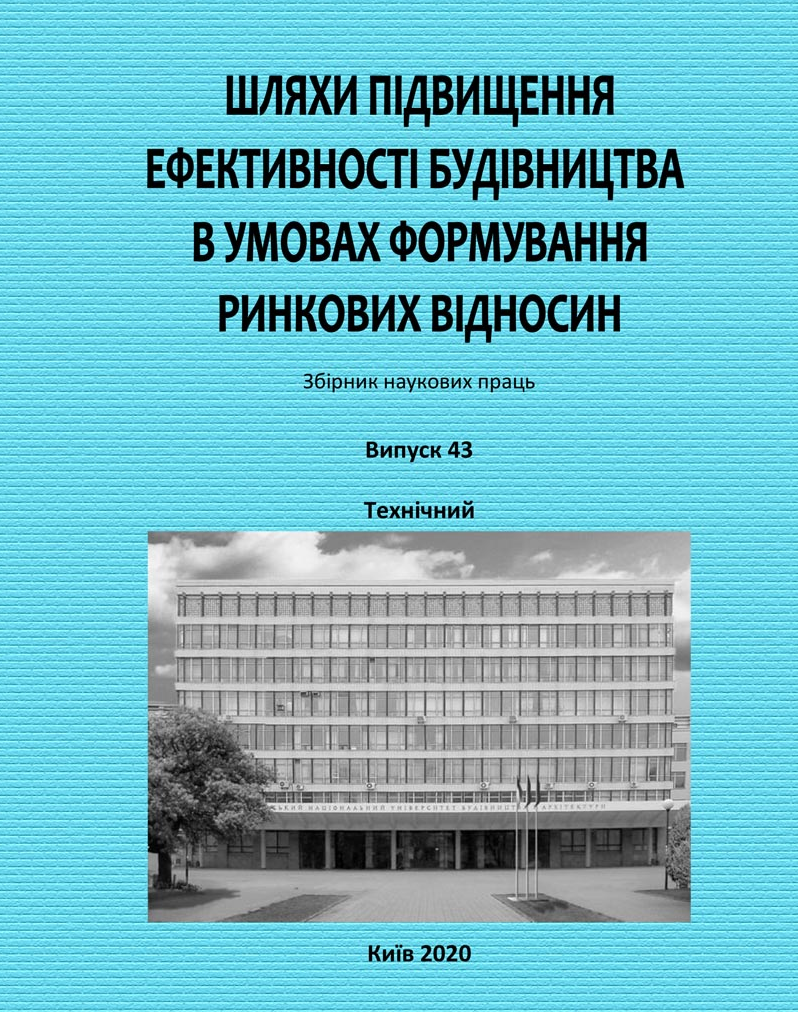Properties of nanomodified concrete in dry hot external conditions
DOI:
https://doi.org/10.32347/2707-501x.2020.43.13-22Keywords:
monolithic concreting, temperature conditions, technology of nanomodified concretes.Abstract
Based on the analysis of literary sources, the article determines the possibility of producing fine-grained concrete for monolithic concreting with water modified with structured colloidal surfactants. Peculiarities of monolithic concreting in dry hot conditions are given and the issues of preparation technology of fine-grained concrete based on cement systems with nanomodified structured colloidal surfactants water are considered. It combines knowledge of the laws of structure formation and modification of the systems “Portland cement - micro-fillers - superplasticizer - colloidal surfactants” to ensure the technological and operational properties of concrete in the face of changing factors of its technology and operation. An increase in the rate of heating of concrete leads to a decrease in the strength of concrete. However, the decrease in strength of concrete structured by colloidal surfactants is much less than in concrete that does not contain these substances. The results of studies have established that the use of superplasticized systems based on cement and structured water allows directionally controlling technological properties and creating a solid concrete structure with improved construction and technical properties during hardening in dry, hot temperature conditions. The results of the studies allow us to draw the following conclusions: the introduction of colloidal hydrophobic surfactants into the composition of concrete in ultra-low concentrations leads to a decrease in the stratification of cellular concrete along the height of the product; the introduction of concrete to colloidal hydrophobic surfactants in ultra-low concentrations leads to a decrease in its thermal conductivity; the introduction of colloidal hydrophobic surfactants into the composition of concrete in ultra-low concentrations leads to an increase in its stability, both to the action of elevated temperatures and low (frost). This creates the possibility of early loading of structures, shortening the production cycle, increasing the turnover of formwork and accelerating the construction of monolithic buildings and structures in dry, hot temperature conditions.
References
Bentz, D.P. (2005). «Replacement of "coarse" cement particles by inert fillers in low w/c ratio concretes. II. Experimental validation». Cement Concrete Research. Vol. 35, No l, 185-188.
Arteit, С., Garcia, Е. (2008). «Impact of superplasticizer concentration and ultra-fine particles on the rheological behaviour of dense mortar suspensions». Cement Concrete Research, Vol. 38, № 5, 633-642.
Erdem, Т.К., Kirca, O. (2008). «Use of binary and ternary blends in high strength concrete» Construction and Building Materials. Vol. 22, № 7, 1477-1483.
Chujie, J. Wei, S., Shi, H., Guoping, J. (2009). «Behavior of steel fiber-reinforced high-strength concrete at medium strain rate». Front. Archit. Civ. Eng. China. Vol. 3, № 2, 131-136.
Bazhenov, U. M., Lukuttsova, N.P., Matveeva, E.G. (2010). «Yssledovanye nanomodyfytsyrovannoho melkozernystoho betona», Herald MGRS. 4. T. 2, 415-418.
Tevyashev, A.D., Shytykov E.S. (2009). «O vozmozhnosty upravlenya svojstvamy cementobetonov s pomoshhyu nano-modyfykatorov». Eastern-European Journal of Enterprise Technologies, 4/7 (40), 35-40.
Gamalyj, E.A., Trofymov, B.Ya., Kramar, L.Ya. (2009). «Struktura y svojstva cementnogo kamnya, s dobavkamy mykrokremnezema y polikarboksylatnogo plastyfikatora», Vestny`k YuUrGU, 16, 29-35
Papayianni, I., Tsohos, G., Oikonomou, N., Mavria, P. (2005). «Influence of superplasticizer type and mix design parameters on the performance of them in concrete mixtures». Cement Concrete Research. Vol. 27, 2, 217-222.
Shishkin, A., Shishkina, А. (2019). «Zastosuvannya koloyidnyx poverxnevo-aktyvnyx rechovyn v texnologiyi dribnozernystyx betoniv». Shliakhy pidvyschennia efektyvnosti budivnytstva v umovakh formuvannia rynkovykh vidnosyn, 39, 1, 21-24.
Shishkina, A., Shishkin, А. (2018). Research into effect of complex nanomodifiers on the strength of fine-grained concrete. Eastern-European Journal of Enterprise Technologies. 3/6 (93), 46 – 51.
Downloads
How to Cite
Issue
Section
License
Copyright (c) 2020 А. Shyshkin, А. Shyshkina

This work is licensed under a Creative Commons Attribution 4.0 International License.
Authors who publish with this journal agree to the following terms:
- Authors retain copyright and grant the journal right of first publication with the work simultaneously licensed under a Creative Commons Attribution License that allows others to share the work with an acknowledgement of the work's authorship and initial publication in this journal.
- Authors are able to enter into separate, additional contractual arrangements for the non-exclusive distribution of the journal's published version of the work (e.g., post it to an institutional repository or publish it in a book), with an acknowledgement of its initial publication in this journal.
- Authors are permitted and encouraged to post their work online (e.g., in institutional repositories or on their website) prior to and during the submission process, as it can lead to productive exchanges, as well as earlier and greater citation of published work (See The Effect of Open Access).

